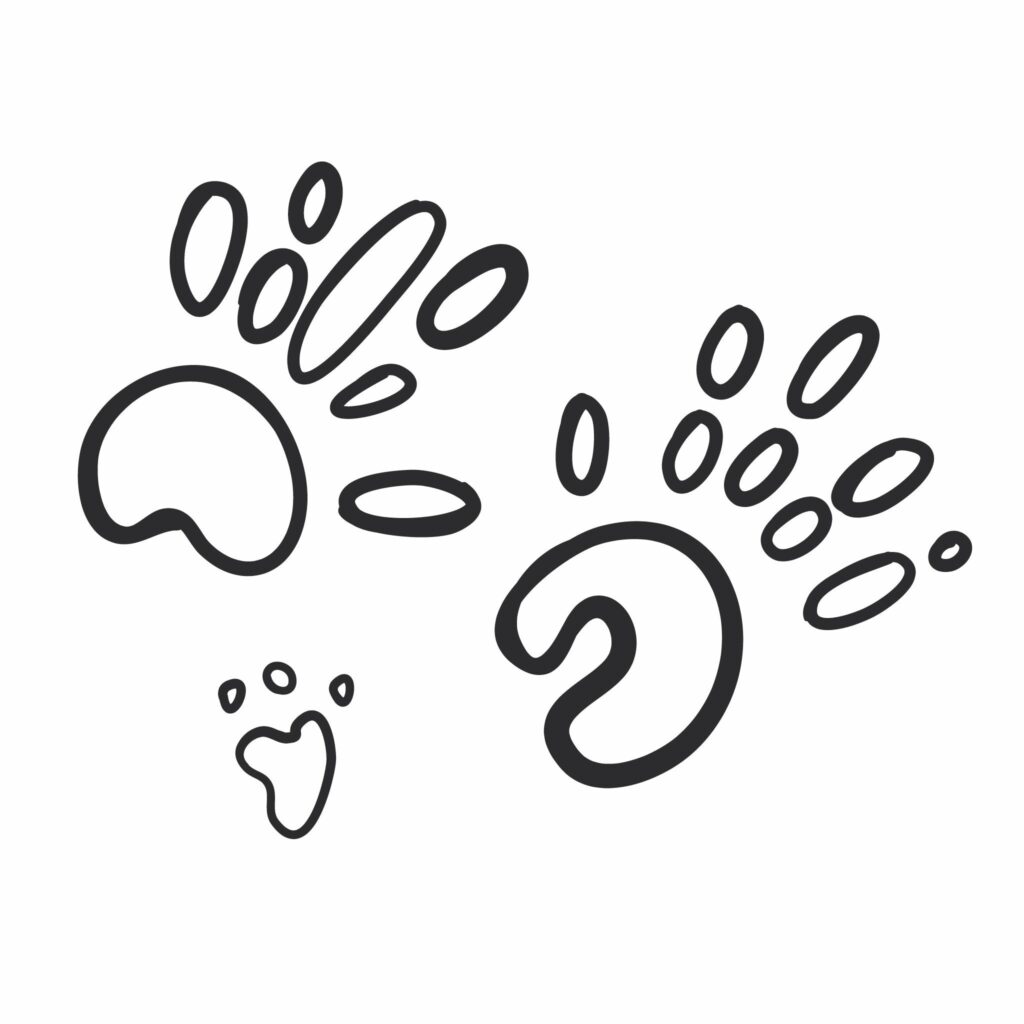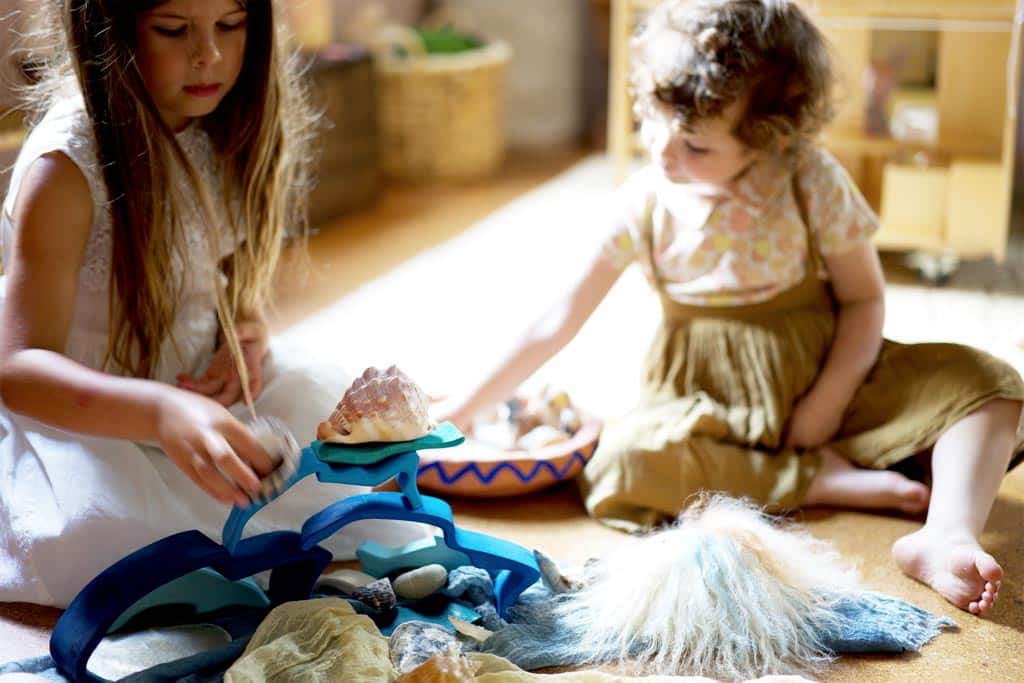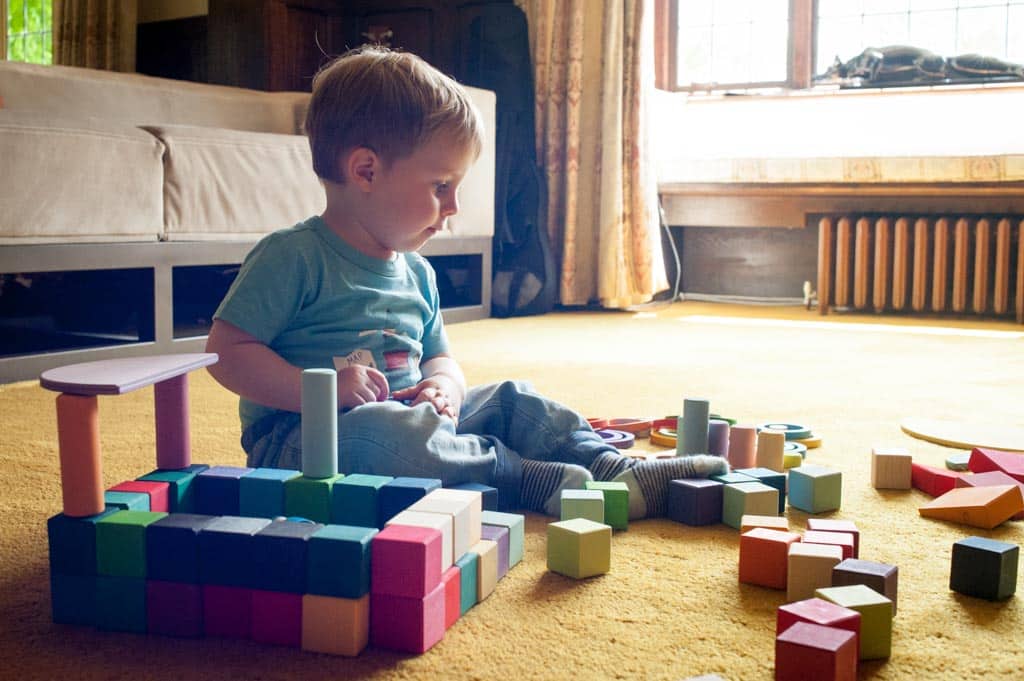Like Little Miss Muffet, my son approaches the tuffet.
He hasn’t seen one before. It’s a new challenge and he can’t call on prior experience to help him. It’s uneven and covered in vegetation.
How will he climb it? Will he go up on all fours? What will he do when he reaches the top? And how will he get down again?
Praxis.
A free module from A Year With My Child
This article is taken from our toddler course, A Year With My Child. It’s packed full of fun and free things to do with your child, delivered as one weekly email. Never run out of ideas again.
Praxis – the way we do things
At its simplest, ‘praxis’ means ‘doing’.
Praxis is the plan we formulate and execute to carry out an unfamiliar movement.
For example, you set up an obstacle course in your living room. It’s a simple series of cushion stepping stones on the left and a couple of boxes to crawl through on the right. Which route will she take? And which skills will she use to reach the other side? She already has all the skills she needs, she just has to knit them together.
As she stands there, at the start of the course, she has three things to think about. These are the three elements of praxis.
- Ideation – deciding what to do.
- Motor planning – choosing how to do it.
- Execution – doing it
- Feedback and adaptation – thinking about how to do it better next time
NOTE: Praxis and motor planning are often used interchangeably but praxis is broader. Motor planning is simply deciding which movements to make in order to complete a task. It says nothing about ideation or execution.
Praxis relies on sensory input
Can you see how praxis requires the integration of all the senses? How can you throw a ball, walk on cushions or form letters with a pencil if you can’t connect the input from your eyes, sense of touch, sense of balance and position of your body in space? It’s for this reason that we looked at proprioception and the vestibular sense in the preceding module.
The big revelation for me when I started teaching – which was reinforced when I became a parent – was that you can’t focus on skills in isolation, hoping to get results. A stable core, co-ordinated limbs and a sense of balance help with more than just going up the climbing frame. Please resist the temptation to sit your child at the table with a pot of crayons before she is ready. That’s not to say that mark-making isn’t fun or necessary, simply that, for toddlers, whole-body movements and sensory integration are far more important.
Children need praxis for writing – but they can practice ideation and motor planning without ever going near a pencil. Minimise screen time and explore with all the senses.
Dyspraxia
My senses tell me that I’m off balance or that I have to duck to get under a branch but I have trouble formulating a
plan to handle the situation.
I have a problem with praxis.
Praxis comes from the Greek word for ‘doing’ or ‘deed’. ‘Dys’ means difficulty. So dyspraxia means ‘difficulty doing’.
If I have poor praxis, I will find activities harder to complete. My friends will do things automatically that I will have to consciously think about. I will only be able to focus on one thing at a time, so listening to my teacher’s instructions whilst carrying out my work is impossible.
We don’t look at special needs in this course, but I think it’s important to highlight the pitfalls of poor praxis. Even if our children don’t have any developmental difficulties, they can suffer from not having had enough practice tackling unfamiliar tasks.
Praxis prerequisites
If the goal is to be better at handling new sequences of action, the following skills are essential:
- a strong core and general muscle strength
- good balance
- motor planning (being able to make basic movements with control, such as extending the arm or squatting down).
- co-ordinating limbs
- a good working memory to remember the steps
- the ability to avoid distraction
The last two are executive function skills. We’ll return to these in a future module. The others can be improved through action. The more time your child spends engaged in physical activity, the better she’ll get.
Praxis activities
Activities for improving praxis look very much like those for developing gross and fine motor skills. The difference is the degree of choice and planning. The task mustn’t be familiar. It’s the new challenge that makes it valuable.
My six-year-old just walked into the room as I was writing this. What’s ‘praxis activities?’ she said, reading the words on my screen.
Can you move across the room using just your knees and elbows?
Can you move across the room with two hands and one foot?
Can you move across the room with on your finger tips and toes?
Great fun for a school-age gymnast, not so easy for a toddler. But the rules are the same. Try something new that challenges you to think about your movements.
Using tools
For the youngest toddlers, everything is new. All movements require praxis.
- Learning to use cutlery
- Drinking from a cup
- Picking up with tongs
- Mark-making with crayons or paint brushes
Give your child the opportunity to use tools whenever possible and the freedom to choose the task. Spoons aren’t just for mealtimes. A toddler can have a happy half hour digging a hole in the garden using a spoon or filling and pouring a cup at the sink.
Self care activities
- Brushing teeth
- Putting on shoes
- Getting dressed
- Washing hands
Tidying up
Putting toys away at the end of a play session is also good for praxis. Lifting toys up and dropping them into a basket and placing blocks back into their tray both involve problem-solving and unusual movements.
Hopscotch
A classic praxis activity, but too hard for children much under 3 because hopping is impossible. I struggled to play it when I was eight! But there’s no reason why you can’t play it by stepping into each square. The challenge is to pick up the stone and decide how to step around its square and continue along your way.
Obstacle course
What makes this different from the cushion obstacle course in last week’s email is that you offer a variety of routes for your child to choose from – or show her that the obstacles can be moved and re-arranged in a configuration of her own choosing. Perhaps she will find other objects in the room that she can incorporate?
In this photograph (my apologies for the mess!) you can see my second son going through a tunnel we made of blocks. He knew how to crawl, of course, but the challenge for his praxis was to get down low enough to go through. Not so easy.

You see these kinds of ‘hollow blocks’ in nurseries everywhere. They are expensive but really versatile. Children can move them around and create their own challenges. They make great steps, dens and enclosures.
But they’re not strictly necessary. You can get much the same result with boxes, cushions and bolsters.
You can add challenge to your obstacle course by introducing a ladder walk. Lay a wooden ladder flat on the ground. Older children can balance on the bars, younger ones step in the gaps.
Obstacle course resources:
- Ladders
- Tables
- Chairs
- Blankets
- Hoops
- Rubber rings
- Cardboard boxes
Action songs or games
Any action song where the movements are not predetermined is perfect, such as Everybody do this. Make up your own actions. If you have an older toddler, she may enjoy making up her own. If you have a one-year-old, clapping and jiggling along to music may be as far as you get. The point is that your child is trying to co-ordinate her body in an intentional way.
Animal walks
We looked at these last time, but here I propose a new twist:
Can you walk over these cushions as a crab?
Can you go through this tunnel as a rabbit?
This is a task suitable only for older toddlers. Your child will need a solid foundation of movement skills and enough language to understand the rules.
Boxes
Climbing into and out of boxes. Make sure the box is low as your child may put her weight on the side, tipping it over. Falling when climbing out of high-sided boxes is painful!
As with all the activities, try to avoid making it into ‘an activity’. Offer a variety of boxes (with sides cut down to an appropriate height). Allow your child the time and space to explore them. She will climb in and out, sit and stand. She may even use them to build. Remember, ideation is part of praxis. Planning is as important as doing.
Open-ended toys
Open-ended toys leave room for the imagination. There is no set way to play with them. A tin of baked beans can be rolled or stacked, an Iron Age fort or Rapunzel’s tower.
Electronic toys, on the other hand, can only be played with in one way. Press the button to hear a bus beeping or a police car nee-nawing. The possibilities for praxis are non-existent.
Try these ‘toys’, for starters.
- Bowls
- Boxes
- Balls
- Paper
- Paper cups
- Wooden blocks
- Curtain rings
Natural materials like sticks, stones and conkers are perfect for this kind of play but not safe for most toddlers. Don’t offer these until your child is safely past the mouthing stage.
Open-ended play demands detailed ideation and motor planning. I clearly remember sitting with my eldest around the time of his first birthday and marvelling at the effort and control required to pick up a wooden block and place it on top of another. There were so many decisions to make and so many adjustments. What determination!
Ball games, bubbles, balloons
Anything that requires an un-planned change of direction in pursuit of a moving target.
Sequencing activities
Some things have to be done in the correct order, like following directions or a recipe.
This is a concept that’s not immediately obvious to your toddler.
Simon Says
For older toddlers.
Simon says… stand on one leg
Simon says… touch your toes
Pat your tummy!
Threading
An older toddler with a wooden needle or shoelace will enjoy threading pasta or curtain rings.
Getting better at the activities
Sometimes children fail at tasks even though we know that they perform the actions. Often, the reason for this is that they didn’t understand what was being asked of them. This is especially true of toddlers, whose language skills are still developing.
The trick is, where possible, to offer games that require no instructions. Where instructions are necessary, the following suggestions will help:
- Demonstrate the task
- Break the task down into smaller steps. For example, one stage of the the obstacle course at a time. Do the same for your instructions
- Physically guide your child through each step. Walk with her around the obstacle course.
- Repeat the instructions before beginning the task
- Narrate the steps as your child tackles them. Give your child the vocabulary to describe what she is doing. Now you are stepping into the box. You are lifting your leg over the side. Will you hold onto the box? The box is wobbling.
- Repeat the task frequently, so that it becomes almost automatic
- Perform activities that improve strength and agility
Final word
Praxis enables children to adapt to their world.
Your child will acquire all kinds of skills as she grows. Praxis helps her to knit them together into meaningful actions.
Activities to promote praxis look very much like ordinary gross and fine motor activities. The difference is the degree of choice and planning.
If the activities in today’s email feel a bit same-y, a bit like those we did the week before, don’t worry. I’m trying to make the point that everyday activities, done with intention, help to develop many of the skills your child needs. You don’t need any special toys or equipment. Having said that, over the course of this year we will tackle mark-making and early maths, problem solving and symbolic play. But we need a solid foundation first.
See you next time.
🙂
Alexis




